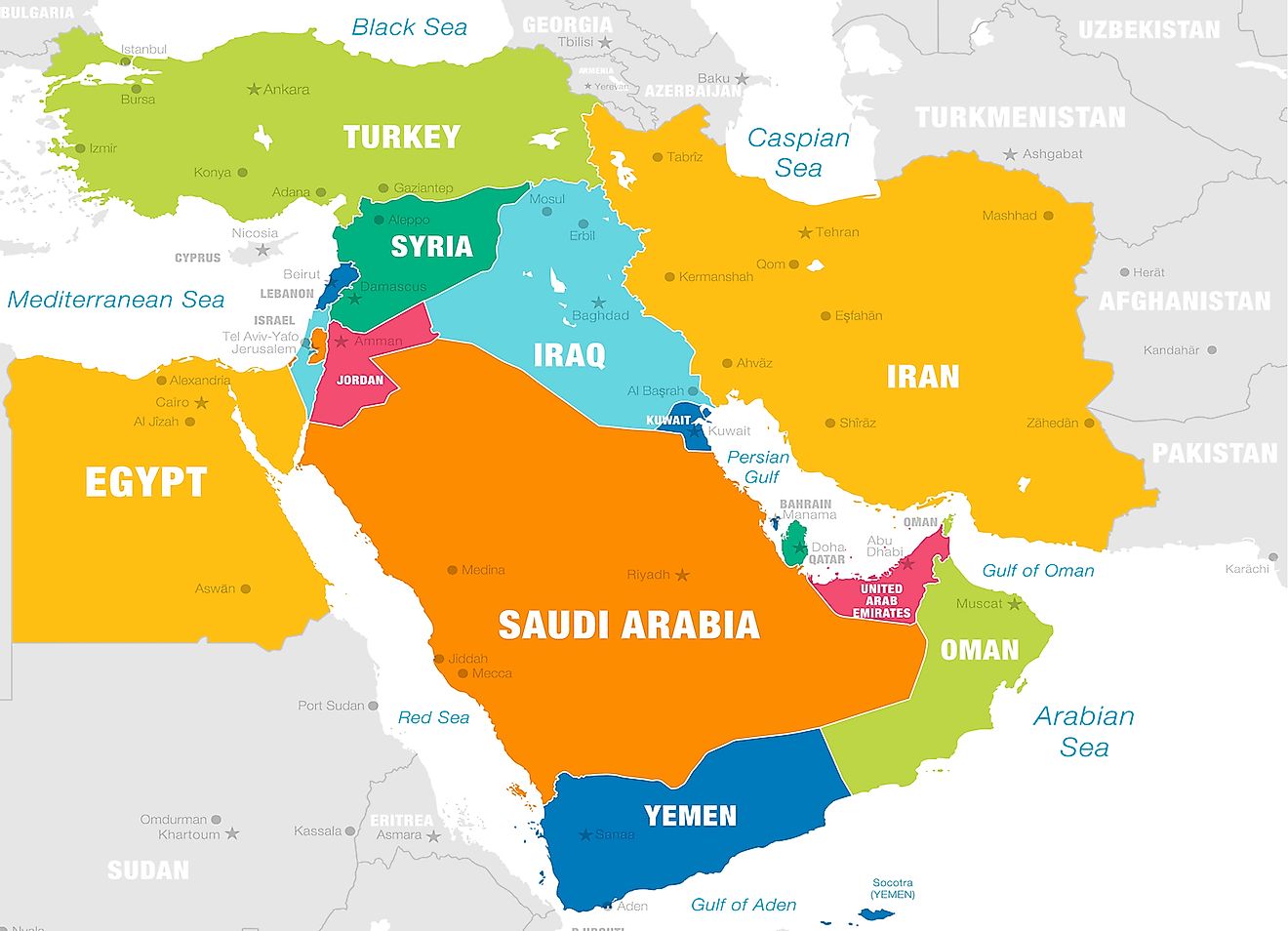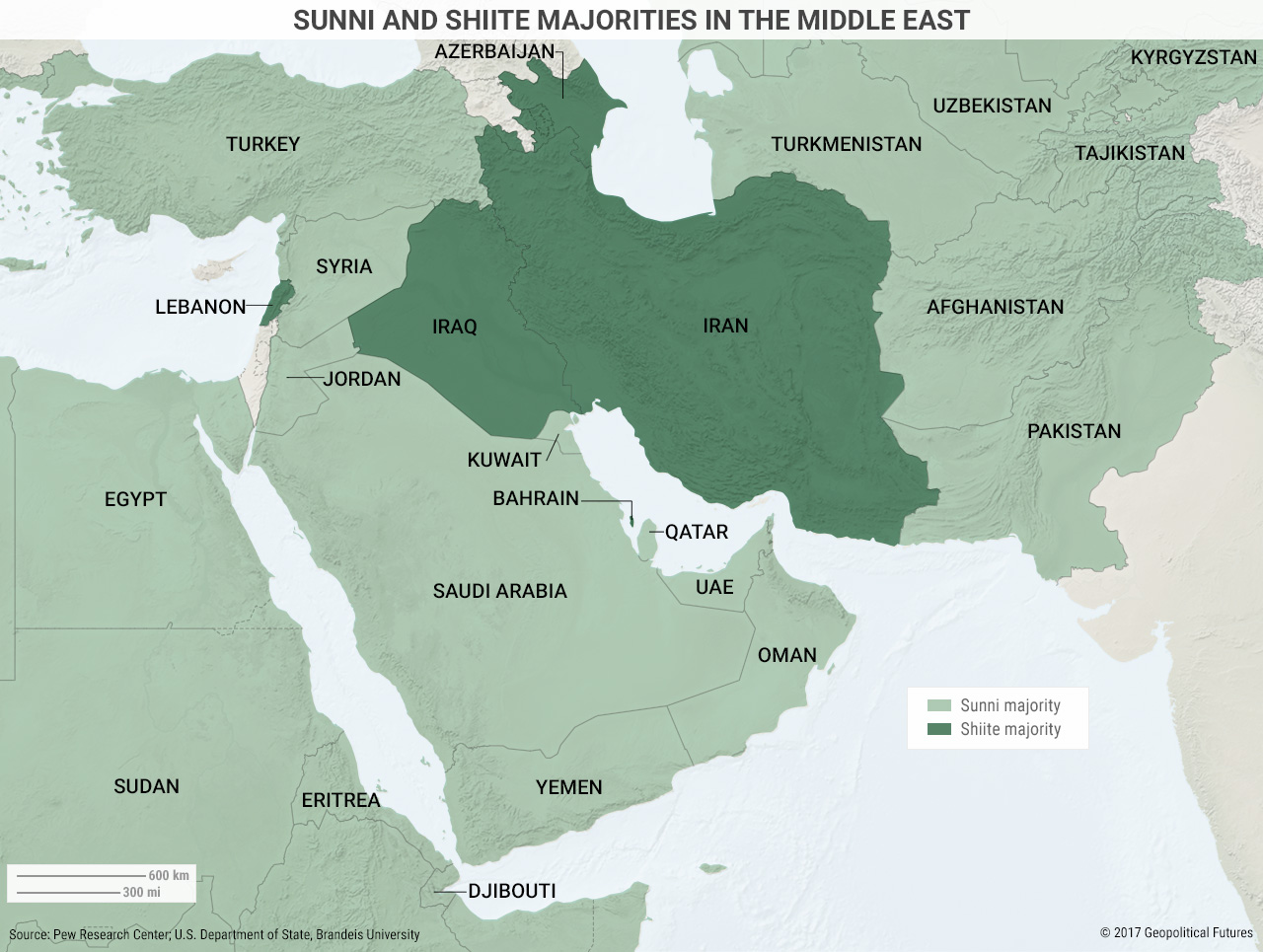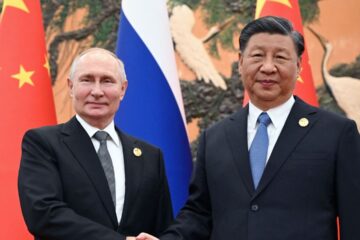Religious Communities in the MIDDLE EAST
Back to basics ! In order for everyone to better understand relations between communities in the Middle East, we’ve decided to share with you some definitions and key religious concepts…
Arabs: those for whom Arabic is the official or co-official language. The majority are Muslims but some are Christians or Jews.
Near East: regions bordering the eastern Mediterranean basin, from Turkey to Egypt (historically “The Levant”).
Middle East: all the countries of Western and South-Western Asia, from Turkey to Iran and even Afghanistan, and from the Southern Caucasus to the Arabian Peninsula, including Egypt.

Judaism
Sephardic Jews: Jews expelled from Spain and Portugal after 1492 (Alhambra Decree in Spain to prevent newly converted Christians to convert back to Judaism). Many found asylum in the Ottoman Empire.
Ashkenazic Jews: Jews from Central and Eastern Europe speaking Yiddish (a language close to German). From the end of the 19th century, fleeing the pogroms of Tsarist Russia, they emigrated to the USA and Western Europe. A small number settled in Palestine.
Zionism : secular ideology that emerged in the late 19th in Central and Eastern Europe and that promoted the establishment of a Jewish state in Palestine. Zionists defend the right for the Jewish nation to have a state of its own.
Orthodox Jews: ultra-religious Jews (Sephardic or Ashkenazi) whose practice follows the commandments of the Torah to the letter. Wearing the traditional black dress, they live in separate communities. They originally opposed Zionism because they believe that the return to Jerusalem can only take place with the coming of the Messiah.
Christianism
Roman Catholic Church: more commonly referred to as the Catholic Church, it is the largest Christian church in the world with 1.3 billion believers.
The Maronites: Christians mainly present in Lebanon, Syria, Cyprus and Turkey. Their liturgical languages are Arabic and Syriac. The Syriac Maronite Church joined the Roman Catholic Church in 1182 and their beliefs and practices are rather similar. Today, the Maronites are the main Christian community in the Middle East.
The Copts: Christians living mainly in Egypt, Sudan and Lybia, under the jurisdiction of a patriarch residing in Cairo (the “Pope of Alexandria”). The rite is celebrated in Coptic (a language derived from ancient Egyptian) and Arabic. Copts’ beliefs and practices are close to those of the Catholics and the Christian Orthodox. However, the Coptic Christian Church emancipated itself from the Roman Catholic Church in 451. Copts particularly believed that both God and man play a role in human salvation: every man can improve his fate with good deeds. Coptic practices are based on asceticism which means that believers should discipline themselves and resist earthly temptations in order to get close to God (it implies fasting and wearing simple clothes for instance).
The Orthodox Christians: Christians who live mainly in former soviet republics and under the authority of the Ecumenical Patriarch which is the Archbishop of Constantinople. The liturgical languages are Greek and Arabic. “Orthodox” literally means “straight teaching/worship” which explains why the Orthodox Christian Church seeks to uphold the doctrines and traditions established by the apostles in the early times of the Christian Church.
Islam
Islam’s ancient schism
Sunnis: after the death of prophet Muhammad in 632, there was a war of succession. Sunnis are Muslims who chose Abu Bakr, a companion of Muhammad, as his successor. Since then, Sunnis have always been the majority: they represent almost 90% of the world’s Muslims. They are rather status-quo oriented and conservative regarding religious matters. Sunnis claim to be faithful to the Sunnah (“tradition”) which is made of hadiths that are a collection of the Prophet’s practices and sayings.
Shias: unlike Sunni Muslims, Shias chose Ali, Muhammad’s son-in-law, as Muhammad’s successor. They developed a narrative based on martyrdom and grievance. Shias also follow the instructions of the Sunnah but the Sunnah of Shia Islam is based on different religious writings. While waiting for the messiah, Shias consider that the members of their clergy (Shia Ulamas) are the most qualified to lead the community. Unlike Sunni Ulamas, Shia ones are financially independent from the state they live in which gives them a greater influence on believers. They position themselves as the proponents of the rights of the oppressed and aggrieved. Shia Muslims are the majority in Iran, Iraq, Azerbaijan and Bahrain. They outnumber Sunnis in Lebanon.

What happened after the death of prophet Muhammad in 632 then? After the death of prophet Muhammad, the first 4 caliphs (“successors”) were the Rashidun (“rightly guided”). The first caliph was Abu Bakr (632-634) who was chosen by Sunnis. Then came Umar Ibn al-Khattab (634-644), Uthman bin Affan (644-656) and eventually a Shia Muslim named Ali (656-661). However, the latter was murdered which intensified tensions between Sunnis and Shias. After the death of Hussein, Ali’s son, during the battle of Karbala (680), Shias considered that the prophet’s descent was usurped.
How to distinguish a Sunni Muslim from a Shia Muslim who are praying ? When praying, Sunnis kneel and make their head touch their prayer mat. As for Shias, they kneel and make their head touch bare earth or a small clay block stemming from a holy place.


Other Islamic communities and ideologies
The Druze: members of a sect founded in the 11th century that is an offshoot of Shia Islam. Fleeing Sunni persecution, they have taken refuge in the mountainous regions of Syria and Lebanon. They also live in Israel and Jordan.
The Alawites: members of a Shia sect who mainly live Syria. Even though they are a minority, they have dominated the Syrian state since the Baath party rose to power in the 1960s and in 1970 when Hafez al-Assad became Prime Minister and then President of Syria. He remained in power until his death in 2000 when his son Bashar al-Assad took over Syria. The Syrian Alawites shouldn’t be confused with Moroccan Alawites who belong to Sunni Islam.
Islamic: adjective qualifying what is related to Islam.
Islamism: political movement favouring the adoption of Islamic concepts in the state governance. Advocates of Islamism are radical Muslims who seek to uphold the Shari’ah (God’s law) which is a religious law primarily derived from the Quran and the hadith (practices and sayings of prophet Mohammad). It is opposed to secularism that promotes the separation between religion and state affairs.
Integralism: Defending the integrity of religious faith and doctrine and rejecting any changes. It is closely linked to Islamism in the sense that integralists argue that all aspects of human life should be ruled by God’s law i.e. the Shari’ah.
Jihadism: The jihad is a duty for every Muslim: they have to make efforts to improve their faith as well as the society in which they live. For example, it can be done, but not solely, through waging war against disbelievers.
Fundamentalism: Conservative tendency with an uncompromising view of religion advocating a return to its fundamentals.
Salafism: Sunni movement that promotes a return to Islam as it was under the prophet’s time. The majority of Salafists are non-violent and critical of jihadism as a justification to wage war.
If you want more information about salafi-jihadism, I advise you to have a look at my article on Daesh’s statehood and caliphate.
Wahhabism: fundamentalist Sunni ideology created in Arabia (future Saudi Arabia) in the 18th century by Muhammad ibn-Abdul Wahhab. It was revived during the 20th century in Saudi Arabia by ibn-Saud. Wahhabism condemns all practices that are not prescribed by the Quran.



7 Comments
Al-Qaeda and Daesh in Africa - geopol-trotters · 29 December 2022 at 5:18 pm
[…] Salafi jihadist groups resort to violent means in order to seize power and establish a caliphate where people would live according to Allah’s law, the shari’ah. […]
SOMALIA: al-Qaeda’s base in Eastern Africa - geopol-trotters · 27 December 2022 at 5:23 pm
[…] to the State’s judicial system. Indeed, it supported a strict application of Allah’s law, the shari’ah. Despite its violence ideology, it brought order and addressed the anarchy that reigned in some […]
[Part 1] Wars in Afghanistan (1979-2001) - geopol-trotters · 26 November 2022 at 6:18 pm
[…] Mujahideen were Sunni Islamist rebels who adopted a violent form of jihad to impose religious concepts in the political life of Afghanistan. They were anti-communist and […]
West Africa, a Hotbed of Narcoterrorism - geopol-trotters · 25 November 2022 at 8:34 pm
[…] the fierce competition between violent Salafist groups in the Sahel, fundamentalists of all stripes agree that drug trafficking can be halal […]
A short History of the Iran-US relationship - geopol-trotters · 15 October 2022 at 7:08 am
[…] Republic in its name, Iran is primarily ruled by the power of the Ayatollah (title of the highest Shia religious leader) while the President‘s influence remains limited. The latter is often seen […]
The French Intervention in Mali since 2013 - geopol-trotters · 24 September 2022 at 2:39 pm
[…] got help from Islamist groups […]
Daesh’s Statehood and Caliphate - geopol-trotters · 30 August 2021 at 2:26 pm
[…] its statehood and caliphate to achieve its salafi-jihadist goals. Indeed it aimed to return to the true Sunni Islam where all Muslims only respect Allah’s shari’ah. IS also promoted violent actions against […]